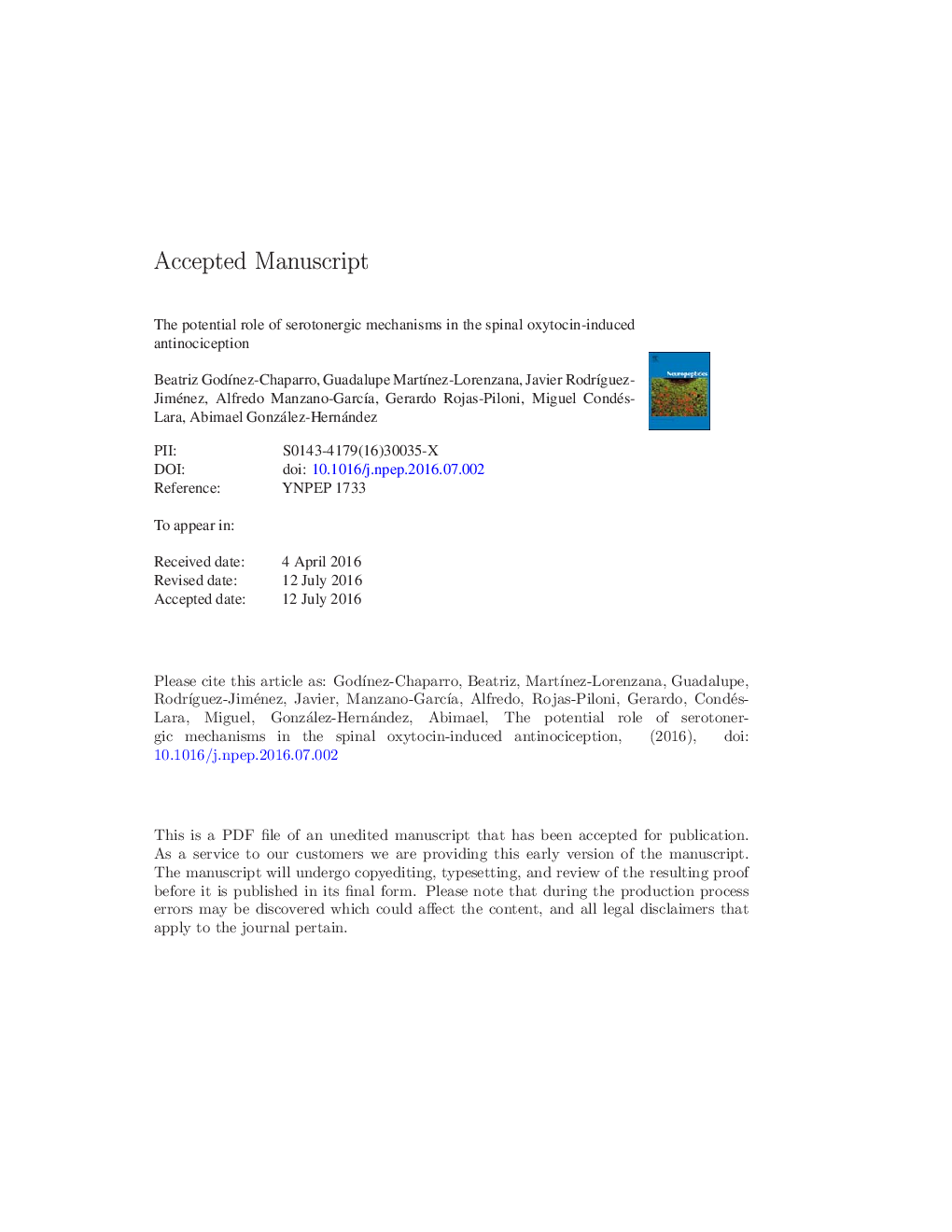| Article ID | Journal | Published Year | Pages | File Type |
|---|---|---|---|---|
| 8633854 | Neuropeptides | 2016 | 37 Pages |
Abstract
The role of oxytocin (OXT) in pain modulation has been suggested. Indeed, hypothalamic paraventricular nuclei (PVN) electrical stimuli reduce the nociceptive neuronal activity (i.e., neuronal discharge associated with activation of Aδ- and C-fibers) of the spinal dorsal horn wide dynamic range (WDR) cells and nociceptive behavior. Furthermore, raphe magnus nuclei lesion reduces the PVN-induced antinociception, suggesting a functional interaction between the OXT and the serotoninergic system. The present study investigated in Wistar rats the potential role of spinal serotonergic mechanisms in the OXT- and PVN-induced antinociception. In long-term secondary mechanical allodynia and hyperalgesia induced by formalin or extracellular unitary recordings of the WDR cells we evaluated the role of 5-hydroxytryptamine (5-HT) effect on the OXT-induced antinociception. All drugs were given intrathecally (i.t.). OXT (1 Ã 10â 5-1 Ã 10â 4 nmol) or 5-HT (1 Ã 10â 3-1 Ã 10â 1 nmol) prevented the formalin-induced sensitization, an effect mimicked by PVN stimulation. Moreover, administration of OXT (1 Ã 10â 5 nmol) plus 5-HT (1 Ã 10â 3 nmol) at ineffective doses, produced antinociception. This effect was antagonized by: (i) d(CH2)5[Tyr(Me)2,Thr4,Tyr-NH29]OVT (oxytocin receptor antagonist; 2 Ã 10â 2 nmol); or (ii) methiothepin (a non-specific 5-HT1/2/5/6/7 receptor antagonist; 80 nmol). Similar results were obtained with PVN stimulation plus 5-HT (5 Ã 10â 5 nmol). In WDR cell recordings, the PVN-induced antinociception was enhanced by i.t. 5-HT and partly blocked when the spinal cord was pre-treated with methiothepin (80 nmol). Taken together, these results suggest that serotonergic mechanisms at the spinal cord level are partly involved in the OXT-induced antinociception.
Related Topics
Life Sciences
Biochemistry, Genetics and Molecular Biology
Endocrinology
Authors
Beatriz GodÃnez-Chaparro, Guadalupe MartÃnez-Lorenzana, Javier RodrÃguez-Jiménez, Alfredo Manzano-GarcÃa, Gerardo Rojas-Piloni, Miguel Condés-Lara, Abimael González-Hernández,
